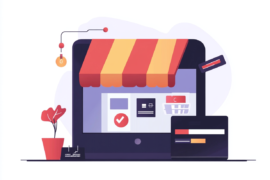This article may contain references to products or services from one or more of our advertisers or partners. We may receive compensation when you click on links to those products or services. Nonetheless, our opinions are our own.
The information presented in this article is accurate to the best of our knowledge at the time of publication. However, information is subject to change, and no guarantees are made about the continued accuracy or completeness of this content after its publication date.

Updated by Albert Fang
Key Highlights
- A rain check lets you buy a sale item later if it’s out of stock.
- Not all items qualify for rain checks, especially limited-time offers.
- The FTC’s Unavailability Rule protects you from bait-and-switch tactics.
- Rain checks are usually valid for 30-90 days, so check the expiration date.
- Remember to ask for a rain check at the start of your checkout process.
Introduction
Have you ever felt excited about a sale? Then you walk into the store, only to find they are out of the item you wanted. That is when a rain check policy helps! A rain check is a promise from the store. It means you can buy a sale item at a later date for the same price that was advertised, even if it is not available now. Let’s see how this works in 2024-2025.
Understanding the Basics of Rain Checks
Rain checks are common in stores. They help when a popular sale item is not in stock. A rain check is like a promise from the store. It lets customers buy the item at the sale price once it’s back on the shelf. This practice makes things fair and stops stores from misleading customers by advertising items they can’t sell.
Rain checks are supported by the Federal Trade Commission’s (FTC) unavailability rule. This rule was made in 1989. It protects customers from bait-and-switch tricks. Stores must have enough advertised products available or offer options like rain checks.
The Evolution of Rain Check Policies in Retail
The idea of rain checks started in the 1800s. It began with baseball games that were postponed because of rain. People who had tickets received “rain checks” for a future game. This practice later entered retail due to the rise of sales that were advertised.
As time went on, rain checks became common in stores because customers wanted them. The FTC created the Unavailability Rule to help. This rule made it clear that stores must give rain checks, substitute items, or compensation when advertised products are not available.
Now, with more shopping happening online, the role of rain checks is changing again. Some stores have set up online rain check systems. However, managing stock and meeting customer needs during sales in the digital world brings new challenges.
How Rain Checks Benefit Both Consumers and Retailers
Rain checks are a great deal for everyone involved. When customers get them, they are guaranteed the sale price, which makes them more loyal, even if there are not enough items in stock. Just think about getting that discounted TV, even if it’s not in the store right now. This helps build trust and makes it feel fair.
For stores, rain checks help keep customers coming back. When they honor the original sale price, customers are less likely to shop at other stores. This creates a positive feeling and makes people want to shop there again. Plus, rain checks allow customers to come back later when the store is less busy.
In short, rain checks show that a store cares about the customer. This helps build a good reputation and shows that the store focuses on their customers’ needs.
Preparing to Use a Rain Check
Before you go to the customer service desk, it helps to be ready. Knowing which items work for a rain check and what details you need will make things faster. This way, you can have an easy time and make the most of your rain check benefits.
Identifying Eligible Items for Rain Checks
While rain checks are often given for sale items, there are some exceptions. Items that have very specific details, limited quantities, or say “while supplies last” may not get a rain check. These rules are usually clear in the store’s rain check policy or in the sale advertisement.
Clearance items, closeout sales, or items with very few in stock also might not qualify. It’s a smart move to ask a store employee if you’re not sure about an item.
Remember, rain check policies can be different for each retailer. Knowing the specific rules of your favorite stores can help you avoid troubles and make the most of your savings.
Gathering Necessary Information Before Requesting a Rain Check
When you’re ready to ask for a rain check, having all your information can help speed things up. Make sure to have these items ready: the product name, a copy of the advertisement (this could be a printed flyer or a digital version on your phone), and the amount you want to buy.
Most stores use electronic systems, but some might still give you a paper voucher. It’s smart to keep a pen with you. Also, you may need to give your contact information if the store wants to let you know when the item is back in stock.
By being organized and ready, you can make getting a rain check easy and quick.
Step-by-Step Guide to Utilizing Rain Checks
Let’s simplify the process of using rain checks. Here are some easy steps to follow. This guide will help clear up any confusion. It will also help you manage the rain check process with confidence. You won’t miss those great sale prices.
Step 1: Verifying the Item’s Eligibility and Availability
The first step is to check if the sale item you want can get a rain check. Sometimes, there could be exceptions, so look at the store policy or the ad. If you see words like “no rain checks,” “limited quantities,” or “available at select locations,” the item may not qualify.
Next, make sure the advertised product is really out of stock and not just misplaced. You can ask a store worker to look for more stock in the back or at other stores. You can also ask when they expect the item to be restocked.
Don’t forget that being polite and patient helps a lot. A little kindness can make it easier for you and the store workers.
Step 2: Requesting a Rain Check from Customer Service
Now, go to the customer service desk. This desk is usually by the entrance or exit. Explain clearly that you want a rain check for the item that is out of stock. Give them the needed details, like the product name, a copy of the advertisement, and how many you want.
Most stores have simple ways to issue rain checks. They might give you an electronic one or a paper voucher. The rain check will say the original sale price, details about the item, the quantity, the expiration date, and any other important rules.
Make sure to check the rain check before you leave the counter. This way, you can clear up any questions or problems. Keep the rain check in a safe spot where you’ll remember it. Don’t forget to note the expiration date!
Conclusion
In conclusion, rain check policies have changed to help both shoppers and stores. By knowing which items qualify, collecting the right details, and using a simple guide, shoppers can use rain checks effectively. It is important to check if items are available, ask for a rain check quickly, and understand how long the policy lasts. With this information, you can take full advantage of rain check offers while shopping. If you have more questions about rain checks, look at our FAQs or contact customer service for help.
Frequently Asked Questions
How long do rain checks typically last?
Rain checks usually come with an expiration date. This date can be between 30 to 90 days, depending on the store and the laws in your state. There is no federal law about the sale period for rain checks, but it’s smart to use them before they run out. If the item you want is still not available, you can always ask for a new rain check.
Can rain checks be combined with other offers or discounts?
Combining rain checks with other offers depends on the store’s rules. Some stores let you do it, while others do not, especially for special promotions. It is a good idea to ask customer service for the right information. Usually, if a lower price is available, the store will honor the discounted price. However, keep in mind that rain checks are typically meant for single use on the item listed.
Are all items in a store eligible for rain checks?
Not all products qualify for rain checks. Items mentioned as excluded in the ad, those with limited quantities, clearance products, or those in special promotions usually do not count. Also, retail food stores may have specific rules for perishable items. Always review the store policy or advertisement for the advertised item.
What happens if an item is discontinued?
If a product is no longer available, the store will usually give a substitute item at a similar price or a voucher for the amount of the rain check. Some stores may also offer a reduced retail price on remaining items that are like the discontinued product. It’s a good idea to ask customer service about their exact policy.
Do online purchases qualify for rain checks?
Policies for online purchases can be different for each store. Some stores offer online rain check systems. They may also let you use a rain check at a physical Publix location. Others might not offer such options. It is always good to check the store’s online policy. Right now, the Federal Trade Commission does not have special rules for online rain checks. So, you should look at the store’s app or website for more information.

Reviewed and edited by Albert Fang.
See a typo or want to suggest an edit/revision to the content? Use the contact us form to provide feedback.
At FangWallet, we value editorial integrity and open collaboration in curating quality content for readers to enjoy. Much appreciated for the assist.
Did you like our article and find it insightful? We encourage sharing the article link with family and friends to benefit as well - better yet, sharing on social media. Thank you for the support! 🍉
Article Title: What is a Rain Check Policy and How Does It Work in 2025-2026?
https://fangwallet.com/2024/11/09/what-is-a-rain-check-policy/The FangWallet Promise
FangWallet is an editorially independent resource - founded on breaking down challenging financial concepts for anyone to understand since 2014. While we adhere to editorial integrity, note that this post may contain references to products from our partners.
The FangWallet promise is always to have your best interest in mind and be transparent and honest about the financial picture.
Become an Insider

Subscribe to get a free daily budget planner printable to help get your money on track!
Make passive money the right way. No spam.
Editorial Disclaimer: The editorial content on this page is not provided by any of the companies mentioned. The opinions expressed here are the author's alone.
The content of this website is for informational purposes only and does not represent investment advice, or an offer or solicitation to buy or sell any security, investment, or product. Investors are encouraged to do their own due diligence, and, if necessary, consult professional advising before making any investment decisions. Investing involves a high degree of risk, and financial losses may occur including the potential loss of principal.
Source Citation References:
+ Inspo































![How to Hire Fintech Software Developers [Cost & Factors] fintech software engineers](https://fangwallet.com/wp-content/uploads/2025/03/fintech-software-engineers-270x180.png)












